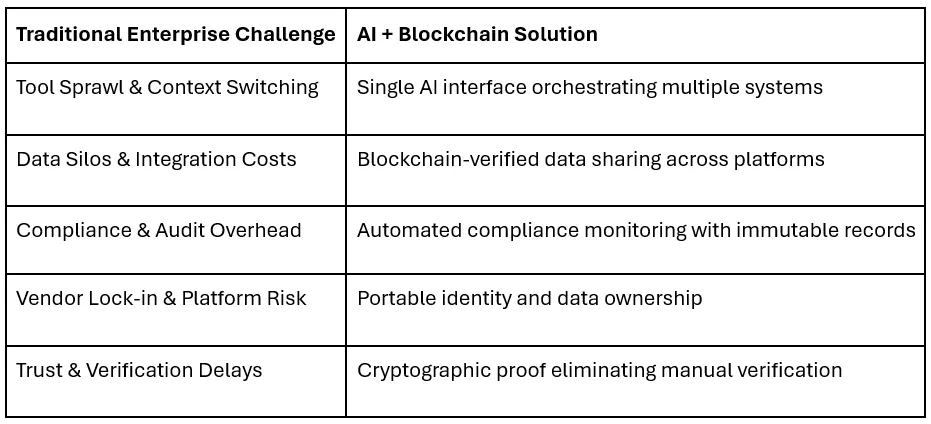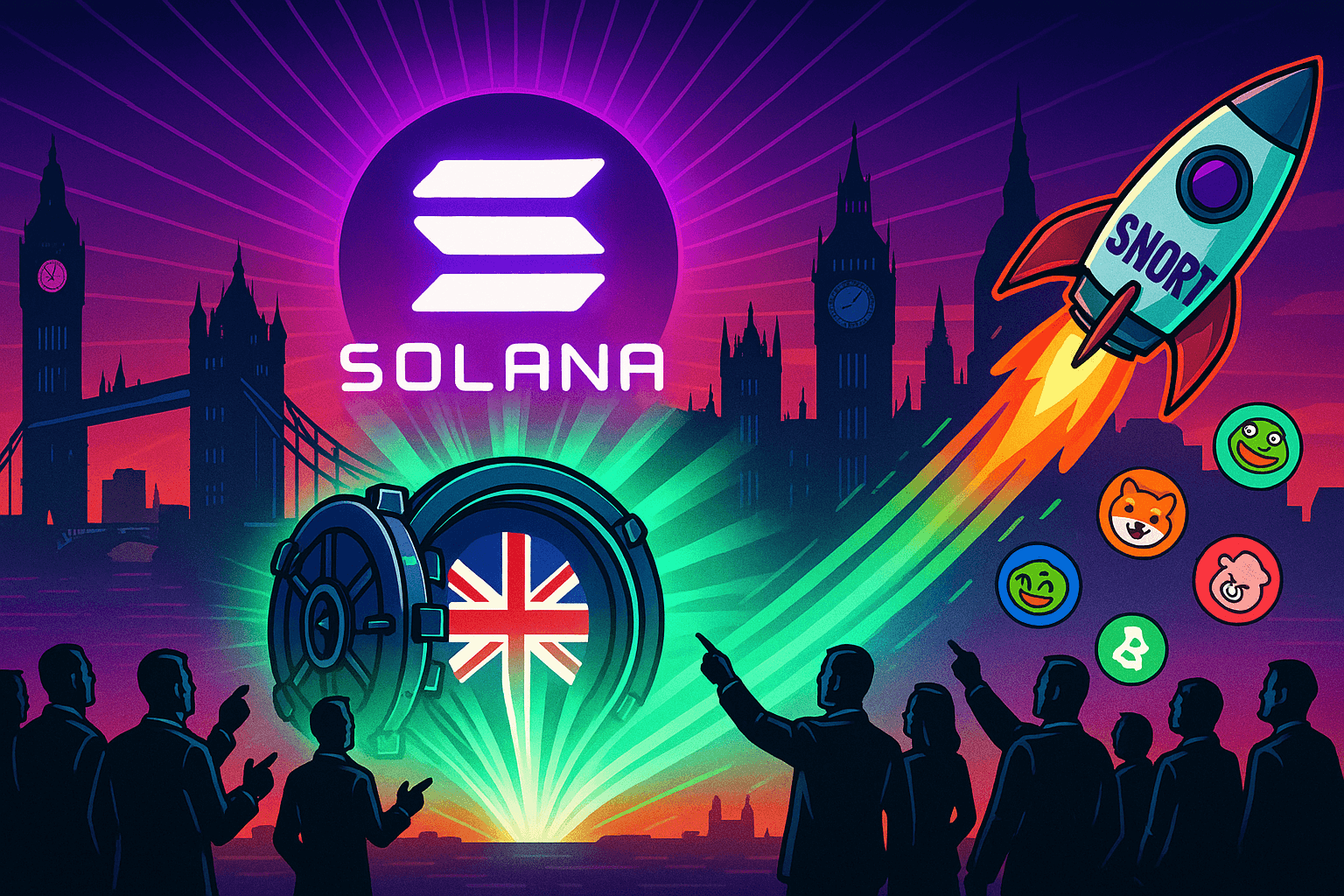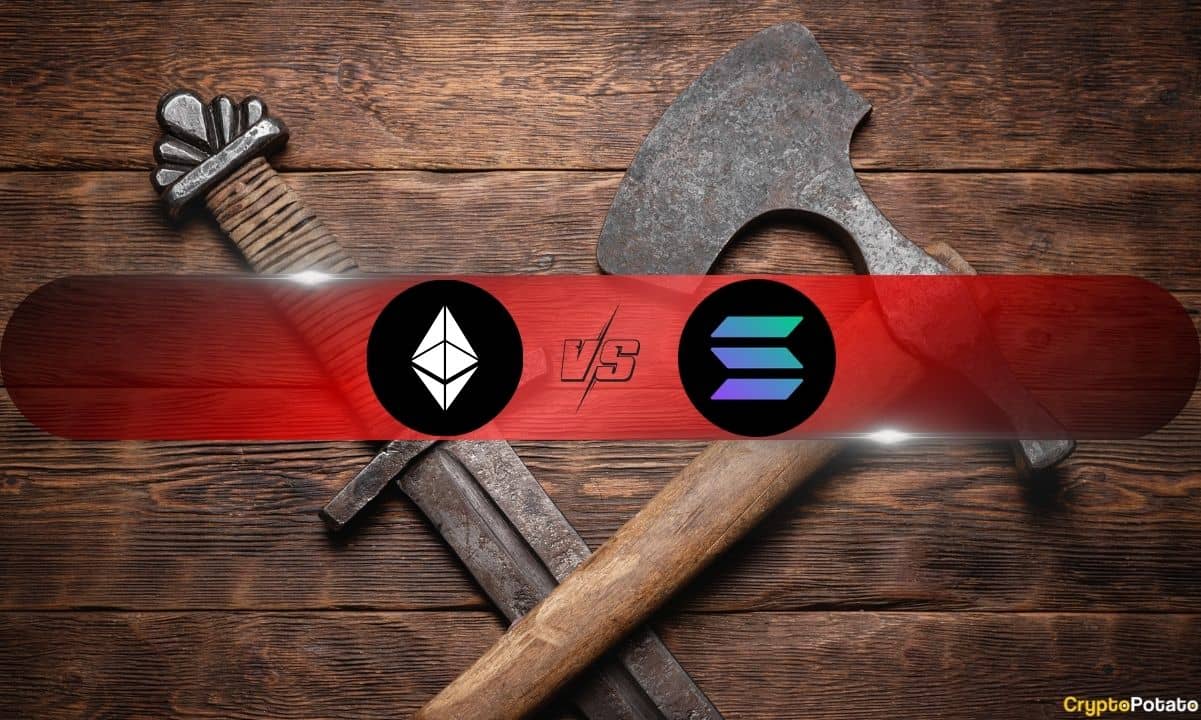This post is a guest contribution by George Siosi Samuels, managing director at Faiā. See how Faiā is committed to staying at the forefront of technological advancements here.
The enterprise software landscape is experiencing a fundamental architectural shift. While organizations struggle with cognitive overload from disparate tools and integration confusion across fragmented systems, a new paradigm is emerging: artificial intelligence (AI)-powered interfaces atop blockchain-secured infrastructure.
This isn’t theoretical—it’s happening now in boardrooms from Singapore to Silicon Valley, where CTOs are discovering that the marriage of adaptive AI and immutable ledgers solves two critical enterprise challenges simultaneously: user experience friction and foundational trust.
The current enterprise dilemma
Enterprise leaders face an impossible choice: maintain streamlined workflows with simple tools that can’t scale, or embrace powerful platforms that overwhelm users and create ecosystem misalignment. The average enterprise uses 254 Software as a Service (SaaS) applications, with employees switching between tools every 11 minutes—a textbook case of stack harmony breakdown.
Meanwhile, data integrity, audit trails, and cross-organizational trust remain manual, expensive, and error-prone. The result? Execution gaps that cost enterprises millions in delayed projects, compliance failures, and lost opportunities.
AI as the intelligent interface layer
Contextual intelligence at scale
Modern AI interfaces don’t just respond to commands—they anticipate enterprise needs. A procurement AI might surface vendor risk assessments before contract renewal, while a compliance AI flags potential regulatory issues during product development. This represents conscious systems design: technology that augments human judgment rather than replacing it.
Enterprise-grade personalization
Unlike consumer AI, enterprise AI must balance individual preferences with organizational policies. Advanced systems now deliver intuitive AI experiences that feel personal while maintaining corporate governance, security protocols, and compliance requirements.
Cross-platform orchestration
The most sophisticated implementations use AI to orchestrate actions across multiple enterprise systems. One conversational interface can trigger workflows in CRM, ERP, and project management tools simultaneously, achieving true systems integration without the traditional middleware complexity.
Blockchain as the trust infrastructure
Immutable audit trails
Every enterprise decision, approval, and transaction gets cryptographically timestamped and linked. This creates unprecedented visibility into process flows, decision-making patterns, and compliance adherence, transforming audit from a periodic nightmare into continuous verification.
Decentralized Identity Management
Enterprise blockchain implementations are pioneering self-sovereign identity for both employees and business entities. Instead of managing dozens of identity providers, organizations can issue verifiable credentials that work across partners, vendors, and regulatory bodies.
Smart contract automation
Complex enterprise agreements, from supplier contracts to partnership terms, can be executed automatically based on predefined conditions. This reduces legal overhead, eliminates payment disputes, and accelerates business velocity.
The hybrid architecture advantage

Implementation patterns for enterprise
The Orchestration Model
Leading enterprises start with AI-powered command centers that aggregate data from existing systems while writing critical actions to the blockchain. This provides immediate cognitive overload relief while building the foundation for deeper integration.
The Federated Trust Model
Multi-party business processes—supply chain, consortium partnerships, regulatory reporting—benefit from blockchain’s neutral ground for data sharing and process verification, with AI handling the complex coordination logic.
The Sovereign Data Model
Enterprises maintaining sensitive intellectual property (IP) or operating in regulated industries use blockchain to prove data integrity and access controls, while AI surfaces insights without exposing underlying information.
Real-world enterprise applications
Supply Chain Transparency: Walmart’s blockchain-based food traceability system now includes AI-powered predictive analytics that can identify contamination risks before they spread, reducing investigation time from weeks to seconds.
Financial Services: JPMorgan’s (NASDAQ: JPM) “JPM Coin” combines blockchain settlement with AI-driven fraud detection, enabling real-time institutional payments with enterprise-grade security.
Healthcare Records: Enterprises like Aetna are piloting systems where AI provides personalized care recommendations while blockchain ensures patient data sovereignty and regulatory compliance.
Building your enterprise stack strategy
Phase 1: Identify Integration Pain Points
Map where your organization experiences the highest cognitive overload—typically in customer service, compliance monitoring, or cross-departmental workflows. These become your pilot zones for AI interface deployment.
Phase 2: Establish Trust Anchors
Select high-value, high-risk processes where blockchain’s immutable record-keeping provides immediate ROI. Common starting points include contract management, intellectual property protection, and regulatory reporting.
Phase 3: Design for Conscious Systems
Ensure your hybrid architecture amplifies human decision-making rather than replacing it. AI should provide context and recommendations; blockchain should verify and secure—but humans should maintain strategic control.
Phase 4: Scale Through Standards
Successful enterprise implementations establish internal standards for AI-blockchain integration that can extend across departments and, eventually, business partners.
The competitive advantage
Organizations that successfully implement AI-blockchain hybrid architectures report 40% reductions in operational overhead, 60% faster compliance processes, and 90% improvement in cross-organizational trust metrics. More importantly, they’re building stack alignment that becomes a sustainable competitive moat.
This isn’t just about technology—it’s about organizational evolution. Companies that master conscious engineering principles in their core infrastructure will outmaneuver competitors who are still trapped in tool chaos and trust deficits.
The question isn’t whether AI and blockchain will reshape enterprise infrastructure—it’s whether your organization will lead the transition or scramble to catch up.
In order for artificial intelligence (AI) to work right within the law and thrive in the face of growing challenges, it needs to integrate an enterprise blockchain system that ensures data input quality and ownership—allowing it to keep data safe while also guaranteeing the immutability of data. Check out CoinGeek’s coverage on this emerging tech to learn more why Enterprise blockchain will be the backbone of AI.
Watch | Futureproof Tech Summit 2024: Exploring new AI-blockchain business models

















 English (US) ·
English (US) ·